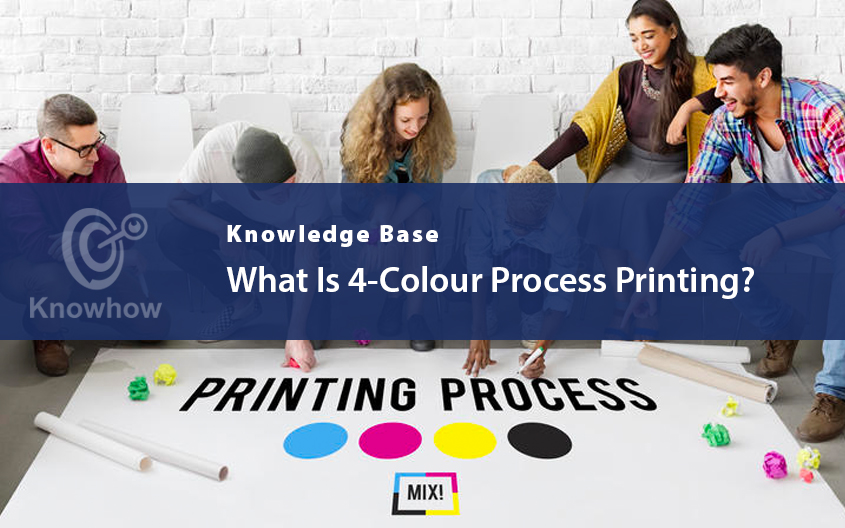
When it comes to printing full-colour images, no printing process is as popular and successful as 4-colour process printing. From making brochures and magazines to books and catalogues — everyone uses this type of printing. Below, you will find all the necessary info on 4-colour process printing so that you can learn about all its benefits and how it differs from other printing types.
What Does the Name Stand For?
As the name itself suggests, 4-colour printing employs four different ink colours. These colours are cyan, magenta, yellow, and black. These colours are collectively known as the CMYK colours. CMYK printing is actually just a different name for 4-colour printing, one you might be a bit more familiar with.
When you apply these four colours in successive layers, they can form multi-coloured images easily. No other colours are necessary, as mixing the four mentioned above can create almost any other colour you might need. Believe it or not, layering these colours in different concentrations can create more than a thousand different hues, making printing full-colour images easier than ever.
If you want to see the process for yourself, all you need is an ordinary magazine or a brochure and a magnifying glass. Find a coloured image and put the magnifying glass over it. You’ll be able to see thousands and thousands of tiny CMYK dots applied on paper. Together, they make up the photo you are looking at.
Are There Any Limits When It Comes to Colours?
Unfortunately, CMYK printing cannot produce every colour imaginable. There are certain hues that this type of printing alone can never produce. In cases like that, unique PMS (Pantone Matching System) colours help fill in the blanks. They are also called spot colours.
PMS colours are special colour formulas that a printer can actually reproduce accurately. They are not simulated by layering different colours on top of each other. Instead, they are premixed from existing formulas. After that, they get a standardised number that you can recognise them by.
Certain projects require the use of the four CMYK colours and one or two PMS colours together. Such projects are called 5 or 6-colour projects, and the names are pretty logical. These projects are often those for a logo design, and they are more expensive since they require more than standard CMYK printing can do.
However, in reality, only a small number of projects actually require the addition of a PMS colour. Printers and designers often try to get an approximate shade of a colour that CMYK printing can produce. That way, a 4-colour printer can do the entire project on its own.
When you plan a printing job, make sure you only include the colours that are available on a CMYK printer. If you, by any chance, include a PMS colour in your design, the printer will not be able to reproduce it. The results will be less than desirable, and you will have to revisit everything and fix the mishap.
If you do not know which colours you can and cannot count on, you can consult the manual that comes with the printer. Alternatively, you can ask whoever is doing the printing job for you. Doing so will save you a lot of time.
Related content:
Branding & Printing Guides
Do Not Mix RGB and CMYK Colours
RGB is an acronym for red, green, and blue. Those are the colours you see on your laptop and phone screens, as well as those created by scanners, digital cameras, and desktop printers.
Since RGB colours are fully different from CMYK ones, submitting RGB artwork to a CMYK printer (and vice versa) is something you shouldn’t do. If you do so, you will need to convert RGB colours to CMYK colours before printing, which is an unnecessary waste of time.
There is another problem, though. A 4-colour printer often cannot duplicate a lot of the RGB colours. So, you will have an end product that will be different from what you wanted and anticipated. Since 100% accurate reproduction is impossible, something will always be at least slightly different.
For example, a colour that was bright and vivid on your RGB artwork could turn out subdued and neutral after CMYK printing. Some hues might even be completely the opposite of what you wanted.
So, it is vital that you keep your files in the CMYK format. In addition, you should check the Pantone Process book to see how every colour on your design will be transferred to the surface you are printing on. That way, there will be no surprises.
Any Further Questions?
If you want to learn even more about 4-colour process printing, or if you have a project you would like help with, our highly experienced team are here to help you. simply give us a call on 0800 0148 970 or simply email us today and we will show you how CMYK printing is truly effortless with the right partners






